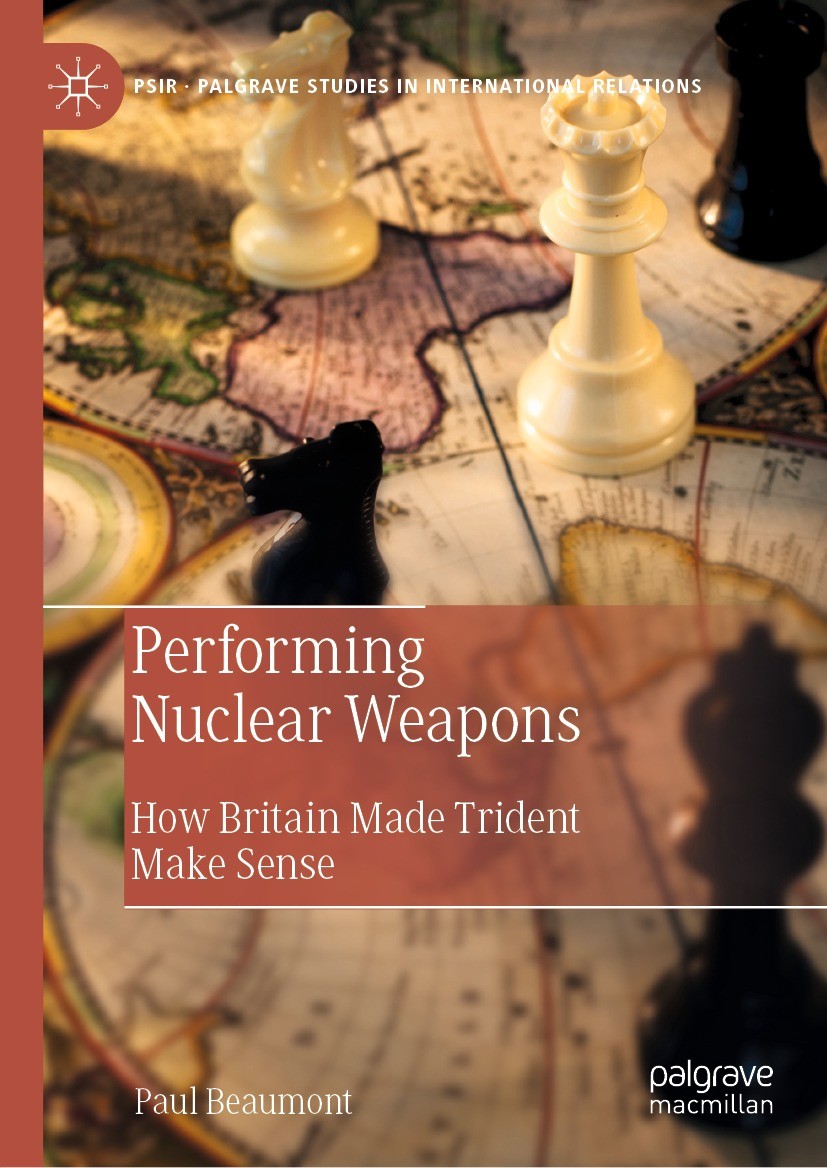| 书目名称 | Performing Nuclear Weapons |
| 副标题 | How Britain Made Tri |
| 编辑 | Paul Beaumont |
| 视频video | http://file.papertrans.cn/744/743961/743961.mp4 |
| 概述 | Conducts a discourse analysis of the UK’s nuclear weapons policy between 1980 and 2010.Historicizes and deconstructs the moving parts of the UK’s nuclear common sense.Provides the theoretical groundwo |
| 丛书名称 | Palgrave Studies in International Relations |
| 图书封面 |  |
| 描述 | This book investigates the UK’s nuclear weapon policy, focusing in particular on how consecutive governments have managed to maintain the Trident weapon system. The question of why states maintain nuclear weapons typically receives short shrift: its security, .of course.. The international is a perilous place, and nuclear weapons represent the ultimate self-help device. This book seeks to unsettle this complacency by re-conceptualizing nuclear weapon-armed states as nuclear regimes of truth and refocusing on the processes through which governments produce and maintain country-specific discourses that enable their continued possession of nuclear weapons. Illustrating the value of studying nuclear regimes of truth, the book conducts a discourse analysis of the UK’s nuclear weapons policy between 1980 and 2010. In so doing, it documents the sheer imagination and discursive labour required to sustain the positive value of nuclear weapons within British politics, as well as providing grounds for optimism regarding the value of the recent treaty banning nuclear weapons.. |
| 出版日期 | Book 2021 |
| 关键词 | nuclear weapons; deterence; British Foreign Policy; discourse analysis; critical security studies; disarm |
| 版次 | 1 |
| doi | https://doi.org/10.1007/978-3-030-67576-9 |
| isbn_softcover | 978-3-030-67578-3 |
| isbn_ebook | 978-3-030-67576-9Series ISSN 2946-2673 Series E-ISSN 2946-2681 |
| issn_series | 2946-2673 |
| copyright | The Editor(s) (if applicable) and The Author(s), under exclusive license to Springer Nature Switzerl |
 |Archiver|手机版|小黑屋|
派博传思国际
( 京公网安备110108008328)
GMT+8, 2025-12-17 12:07
|Archiver|手机版|小黑屋|
派博传思国际
( 京公网安备110108008328)
GMT+8, 2025-12-17 12:07


